Chess Strategy: Master the Fundamentals and Improve Your Game
⭐⭐⭐ Take 15 minutes to read and improve your chess game ➡️ : This article was first published on, and is Copyright of Chessquestions.com
In order to improve your chess game, you must first learn the fundamentals. Too many beginners try to jump right into complex strategies and tactics, without mastering the basics. This is a recipe for disaster.
In this article, we will discuss some basic chess strategy concepts that every player should know. Once you have mastered these concepts, you can move on to more advanced strategies.
Chess Strategy
Do you want to improve your chess game?

I understand that it can be frustrating when you don’t know where to start. It can also be super frustrating to think you are playing well, only for your opponent to make a couple of seemingly unthreatening moves and the game be lost. That’s why I’ve created this comprehensive guide of chess tips on how to improve your chess strategy, so you can get better at the game and have more fun playing with friends, family, online, and in tournaments at any level.
This guide will explain all of the different aspects of chess strategy that are important for improving your play, pawn structure, piece activity, space management, and much more!
Read on and use the links to understand and improve not only your strategy but your entire chess game to improve your rating, win more often against better players and become a better chess player.
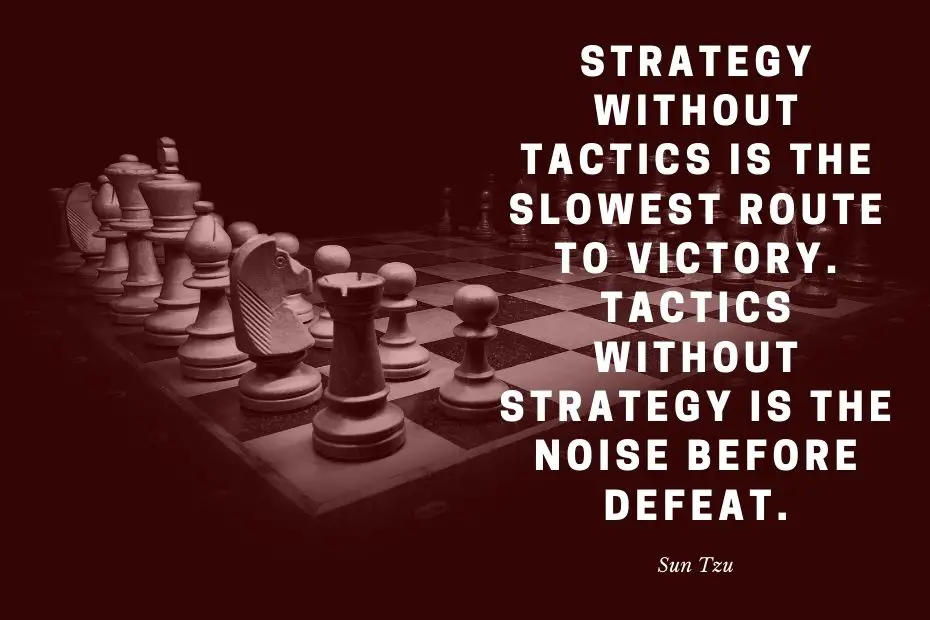
The Importance of Strategy in Chess
The importance of strategy in chess contributes to every chance you have of winning a given game using concepts such as material value, space, positional play, and activity along with pawn structure and king safety to safely execute your tactical prowess.
While the claim is that tactics are 99% of a game of chess, and that is somewhat true, tactics can not guarantee a win.
You can not play chess with tactics alone, you will lose. You need a strategy to reach the goal in chess – Victory.
- Chess is a game of strategy, not tactics
- You cannot play chess with tactics alone and expect to win
- Strategy is what allows you to reach your goal in chess – victory
- This is where the real game of chess begins, and where most people fail to improve.
- Strategy in chess is best described as long-term planning.
- It’s looking ahead several moves and anticipating what your opponent will do.
Basic Strategy in Chess
A lot of beginner chess players make the mistake of trying to learn too many complex strategies at once rather than the basic principles.
This can lead to frustration and a feeling of being overwhelmed. You may feel like you are making no progress at all, and eventually give up on chess altogether.
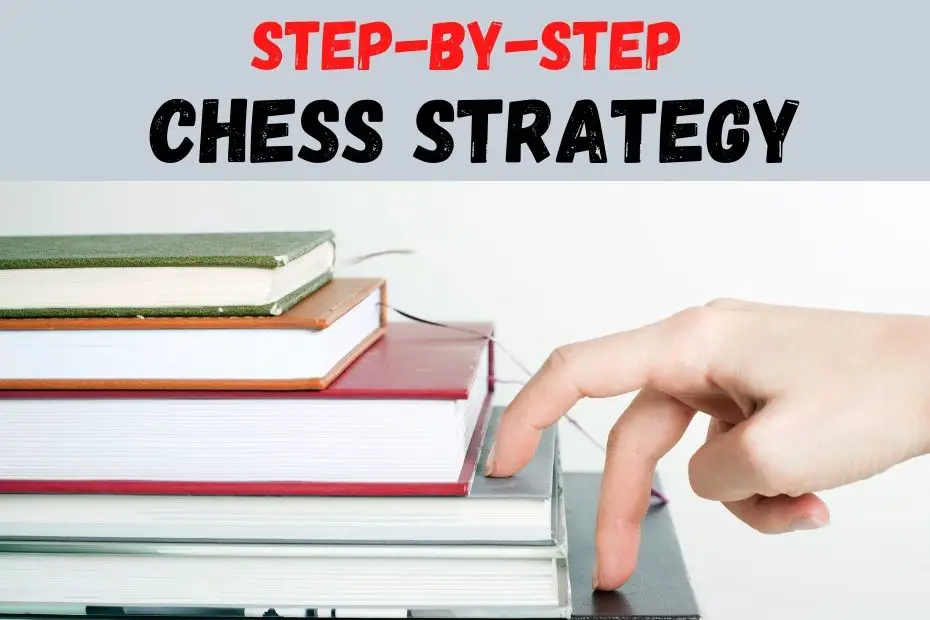
Take things one step at a time. Start by learning the basic concepts and importance of the central squares, then move on to more advanced strategies when you are ready. In this article, we will discuss some basic chess strategy concepts that every player should know.
The Best Chess strategy
A good chess strategy presents us the prospect of defeating our competitors. It must be practical and not overly technical to be most effective. We need to understand that the enemy may already have plans for themselves which can sometimes lead to changes or new ideas in our plans.
Material
In chess parlance, ‘Material’ or ‘Materials’ are the chess pieces on the board. It is not enough to have more pieces than your opponent as each chess piece has value. These values are different and there is a generally accepted basic points value for each chess piece depending on their abilities and moves on the chess board.
Understanding what each piece is worth and gaining a position of superior material advantage or value will generally see a player in a position to trade off pieces for further gain.

Once the advantage has been gained a player can try to force trades and exchanges of Bishops and Knights for an opposing Rook to drive home the advantage.
If you are ahead on Material then an exchange of queens will generally be to your advantage.
Material count is the most fundamental and straightforward strategic element of chess to learn and understand as a beginner as your material is the most important aspect of your ability to compete on the board.
If you are up in Material, try to Simplfy the Position
That’s is an interesting sentence, but what does it mean.
Quite simply, a good strategy is to understand when you are ‘up in material’ and look for opportunities to make some trades and exchanges to remove pieces from the board (Without losing the advantage) and lessen the pieces your opponent has to try to level the position.
Like-for-like material exchanges like pawn trades, bishops, and knights, or even a queen exchange can improve your position if you already have a material advantage.
These exchanges most often happen when the book moves of chess openings have been completed, and the middle game starts with these exchanges and capture of your opponent’s pieces with the plan being gaining the advantage as you enter the end-game.
Activity
None of the above can be achieved without activity of your pieces.
What is Activity in Chess?
Activity in chess relates to the level of potential mobility, threat, or defensive effectiveness of the pieces. The purpose of the pieces and their role in either attacking or defending, defines ‘activity’ in chess positions at any given time, with those with more space afforded greater activity in the game.
Activity is what makes the game of chess ‘dynamic’ in that, the field is an ever-fluid position of collaboration of a group of pieces in either attack or defense of an important or strategic square on the board.

Players who think of moving one piece at a time with no regard for how they are combining or working together with other pieces, often many pieces, to strengthen a position or stoutly defend a minor piece in a good position, will find their position will weaken with material loss quite quickly, with little opportunity to strike back or shore up the position.
Indeed, when you move your back rank pieces, (Knights, Bishops, Rooks, and Queen) you are said to be ‘activating’ them. They become active pieces once they have moved from thier starting squares.
Doing so as quickly as possible and taking them all into the battle is a key fundamental of playing chess, so with that, let’s talk about playing with all of your pieces.
The more active pieces you have the more squares you can attack and defend and gain a positional advantage.
Play With all Your Pieces
Excluding the King on the back rank, you have 7 pieces with superior movement ability in a game of chess to play with. Using only three of four of them would be a blatant disregard of the resources at your disposal. If your opponent has activated all of their pieces, and you still have a Bishop and a Knight on the back rank.
When there are 11 available players in an offensive line in football. Would you use only half of them and expect to be 100% effective in attack?
So get those pieces activated and ensure they have space to move and are not trapped in behind your own pawns. You are going to have enough trouble with your opponent blocking your path and defending squares without your own side getting in your way on the chess board.
Study some chess openings to find some of the most effective ways to activate pieces quickly. The aim is central squares control, so get those central pawns out, develop your supporting pieces, and head for chess success.
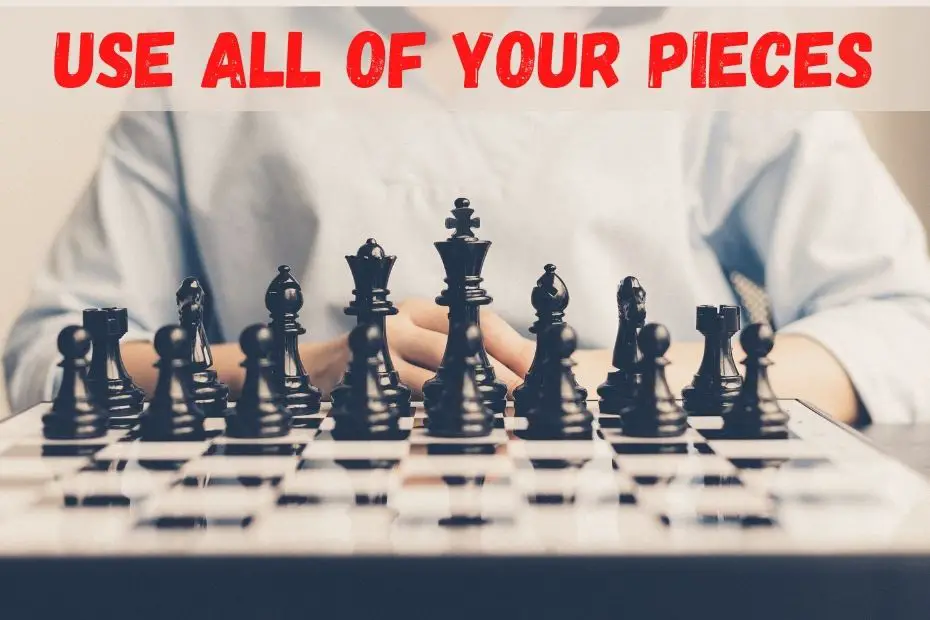
Leaving unactivated pieces on the back rank is one of the most common mistakes new players can make. Usually, the reason for this is by losing tempo in the opening when having to move pieces more than once due to either, not making the best available moves, or the opponent launching a surprise one-piece attack meaning you have to move a piece more than once.
If you can consider carefully where your pieces are being placed and what the threat might be from your opponent on their next move, you can get more pieces developed quickly by moving them just once. The opening in chess is a race to activate as many pieces as possible as quickly as you can.
So to that end let’s take a look at focussing on trying to move every piece only once in the opening.
Move every piece only once in the opening
chessquestions.com
When we talk about moving every piece only once in the opening we are talking about your back rank pieces of Rooks, Bishops, knights and Queen.
We are not considering the pawns at this stage, there is some more detail and depth regarding pawns and pawns structure a little further into this guide.
If you move one of your the same piece twice and your opponent moves each only once, then you will most likely begin to have less control over the central area of the board and the opening in general.
If you can strategically advance to positions with single moves whereby you force your opponent to defend by moving the same piece more than once, you will gain tempo and an advantage in development.
A tempo in chess is when you gain a move, in that your development or advance is not stunted by having to take evasive action to retain a valuable piece or isolated pawn perhaps on an important central square under threat of capture with no defense available for a reciprocation.
Connect Your Rooks And Put Them On Open Files
Connect Your Rooks
One of the most important basic strategies in chess is the connection of your rooks. A lone rook has great range but connected Rooks offer an excellent threat, especially on open files.
What does Connected Rooks mean?
The term ‘Connected Rooks’ in chess refers to when both of a player’s rooks can protect the other on the same rank or file. Connected Rooks often occur on the back rank subsequent to the castling move and offer enhanced protection of the King who has been moved to safety.
By defending one another and thereby becoming considerably more powerful than they would be if they were not connected, rooks help support each other. Getting your Rooks connected is an important idea in chess strategy.
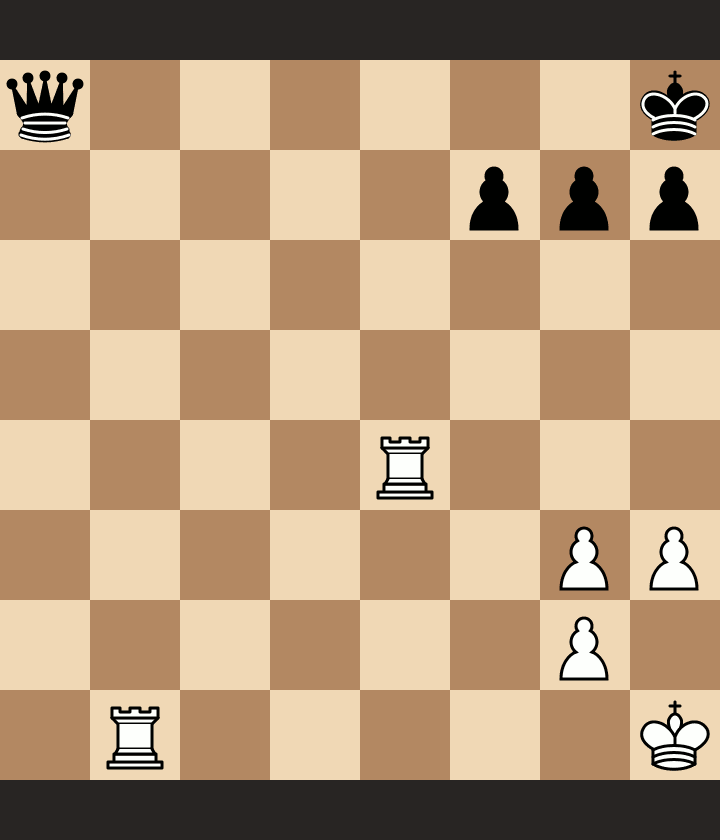
Why are Rooks good on open files?
A rook can take advantage of an open file and should in most cases be aimed at targeting a holding position on one in chess strategy. Rooks on open files or half-open files are considered dangerous since they allow a player to move the entire length of the board, and always carry the threat of a back rank mate on unsuspecting or unprepared opponents.
Control The Center Of The Board
Central control of the chess board provides better mobility and activity for pieces allowing a greater scope of movement and execution of tactics in attack.
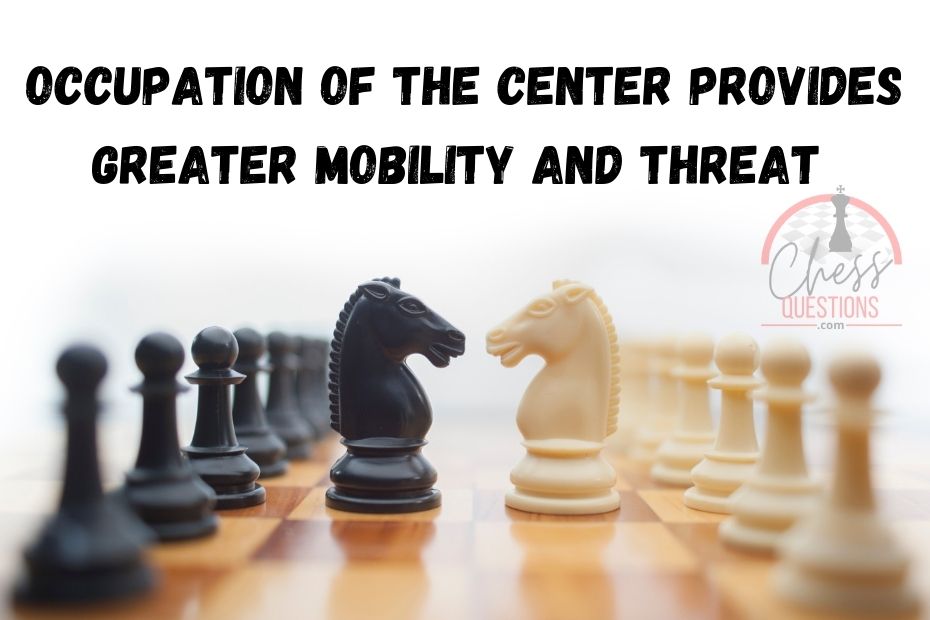
Squares e4, d4, e5, and d5 are the most important area of the chessboard and control the center in chess. Occupation of these squares provides greater mobility and threat for chess players and can be key in maintaining good pawn structure and board control.
Consider every pawn move when looking at playing your chess opening with a view to gaining as much control over the center of the board as is possible.
This is not always an easy concept in beginner chess strategies as both sides will be keen to take this area in most games, so learning basic opening theory for a few options and practicing them well is important.
Improve your Worst Placed Pieces
At some point in any game of chess, you will find yourself in a position where you might not be sure what to do. Often the best move is to activate or develop your worst piece.
That doesn’t mean the worst piece in value terms, but the piece that is least developed, or yet to be activated on the back rank.
Before doing so always go through your checklist of the possible consequence of moving that piece, whilst also considering what your opponent might already be thinking.
Diud they move their Knight on the last move, where could it go next, what are they thinking?
Space
Something you will often hear coaches, training videos or Chess YouTubers mentioning is space and/or creating space, and they do so for good reason.
Creating space is a key element of any chess strategy as it provides a more solid foot and flexibility to mobilize your pieces in a range of directions.
Space is an important concept in chess because it determines how many squares your pieces can move to. Having space means you have more options and can be more aggressive with your moves. Being able to control the center of the board is important because it gives you space to move your pieces.
Creating Space Advantage
When you gain space on the board, it becomes difficult for your opponent to launch their own attacks.
Opposing players will also find it difficult to defend their pieces, as there is not enough room for them to move.
This gives you an advantage in the game, as you can easily outmaneuver your opponent and control the board.
The space used in Chess varies depending upon the progress of the pawns in the particular area of a board.
It’s much easier to have more spaces and smaller spaces require careful handling.
Pawn Structure
‘ll not go deeply into pawn structure as it deserves an entire book of its own, but suffice to say Pawn structure is a fundamental aspect of chess strategy.
good pawn structure can be the backbone of your space on the board, central control and defensive tactics.
Any chess tips you might find will often mention pawn structure as an extremely important part of strategy, and maintaining your own structure and breaking down an opponent’s, will lead to greater opportunities for attack.
Pawns are often viewed as the weakest piece on the board. In terms of point value and range of movement there is no denial, but a good pawn structure can be the backbone of your space on the board, central control, and defensive tactics.
You can make the best effort to ensure you have no weak pawns or isolated pawns and keep a strong pawn formation where possible.

And chess player who wants to improve would be well served by spending some considerable time studying, understanding and appreciating the importance of pawn structure in chess strategy.
Maintaining good pawn structures in your chess strategy helps and avoiding doubled pawns is something you will want to consider.
Doubled pawns create weaknesses, so avoid it happening to you where possible and try to force your opponent’s pawns into doubling up.
Doubled pawns on central squares are not advantageous.
Pawns Can’t Move Backward
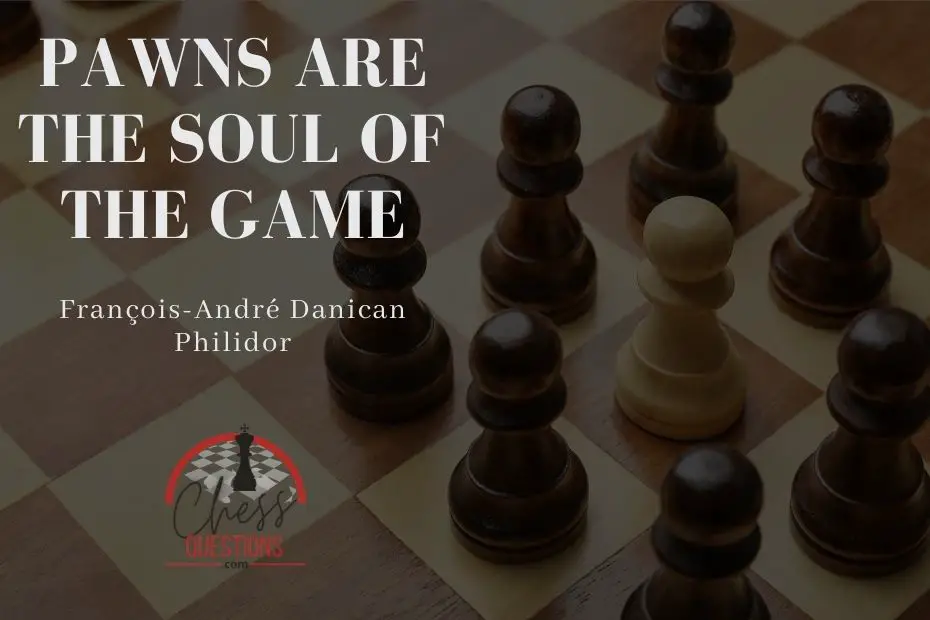
When considering your pawn formation remember they are the only piece in chess that can not make a backward move. Once you have committed your pawn move, there is no retreat.
By the same token, chess strategy should always consider these short-range pieces and how the value of advanced pawns arguably increases the further they move forward.
Don’t forget en passant, many a beginner can be taken by surprise with this move, and also don’t block in your own pieces.
Good chess strategy will consider the ability to distract your opponent who knows what happens when a pawn reaches the other side. Pawn promotion.

But don’t get tunnel vision going for the extra queen when you could be just giving a pawn away in what might have been a winning endgame.
King Safety
Your King is the most important piece on the board, as you know, it is the piece around which the entire game revolves and the one that, when under attack has to be defended at all costs in order to stay in the game, therefore King safety has to form a fundamental aspect of chess strategy.

Always have the safety of your king in mind, even when you seem to be in a position of dominance and on the attack. Many a game that looked one has been lost with a back rank mate with a rook or queen sat on an open file and the king trapped behind its own pawns after castling.
Castling early after the development of the adjacent pieces is generally considered a good strategy, although not always essential, more often games are lost because a King could have been castled to safety.
Many chess players make the mistake of not getting their king out of the center of the board early enough.
This can lead to disastrous consequences, as your opponent will be able to bring his pieces towards your king with little risk of being attacked himself.
Castling early is one way to get your king out of the center and into a safer position. You should also avoid pushing your pawns in front of your castled king unless you have other pieces that can protect the weakened squares behind them.
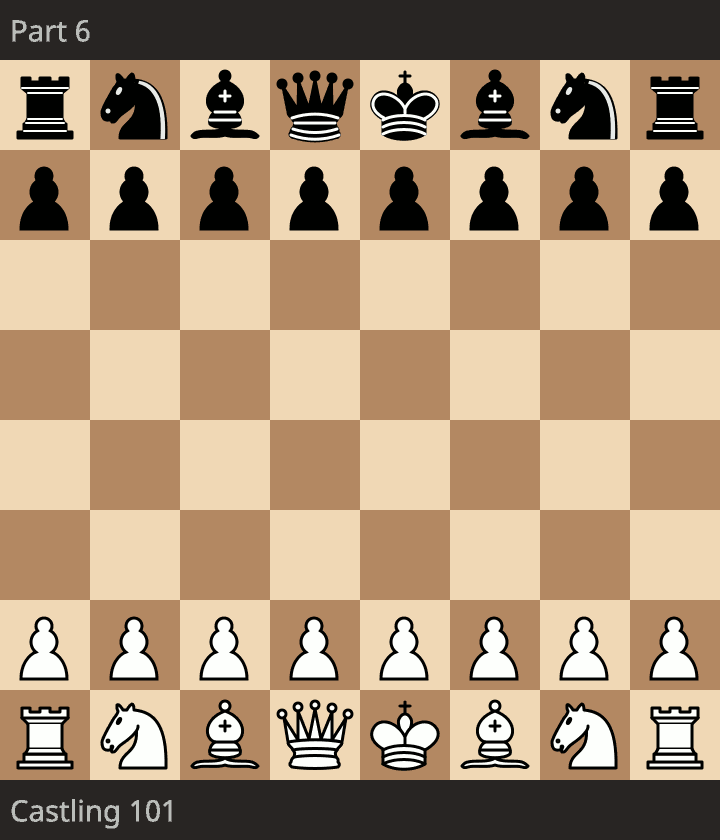
Control the center by placing your pieces in the right positions, and keep your opponent under constant pressure so he won’t be able to mount an attack against you. Finally, neutralize any enemy pieces that threaten your king by exchanging them, blocking them or chasing them away.
Time in Chess Strategy
Time is an ever-present threat in chess, it can work both for you and against you in a variety of ways, and has to always be a consideration in any form of tournament chess where games are timed.
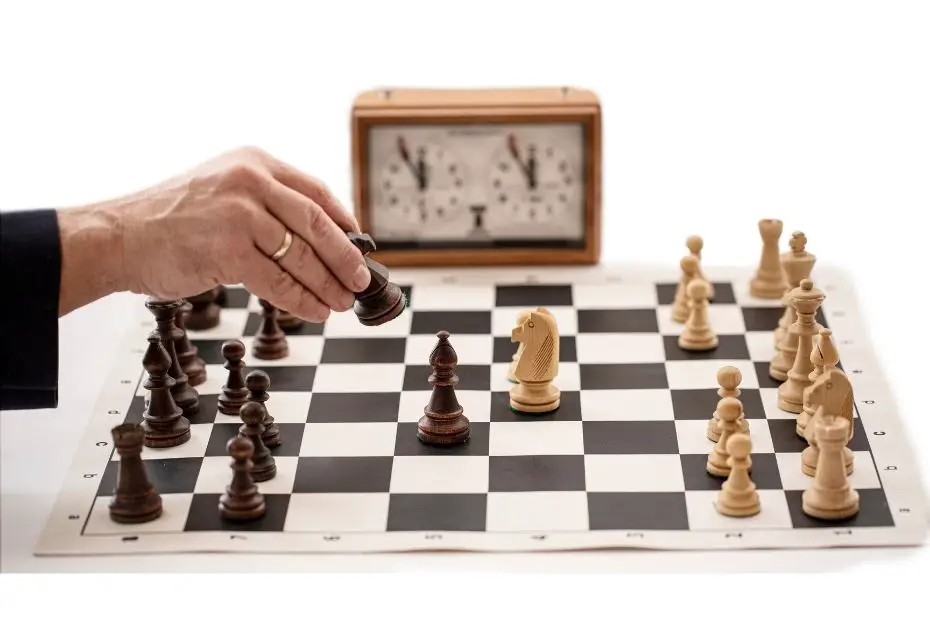
Arguably, it becomes an even bigger aspect of chess strategy in Rapid, Blitz and Bullet games, where time is severely limited and the winner or loser of a game will come down who can make the most accurate decisions about moves in fractions of second at the end of the game
Whatever time control you have for a game of chess, practice some basic math to allocate, pre-game, your time strategy and ensure you allow the most time for the middle game, and ensure you have enough time in the end too.
- 5% of your time on the opening
- 80-90% of your time on the middle game
- 5-15% of your time for the end game
Here you can see the benefits of learning chess openings well, so you can make the first 5-10 moves quickly, and similarly, having good knowledge of mating patterns in the end-game will allow you to allocate much more time to the strategic setting up of the end game once the final book moves are played in the chess openings.
Chess Strategy vs Chess Tactics
It is important to understand and not get confused by the difference between chess tactics and chess strategy. They are not the same thing.
Without a strategy tactics are potentially pointless, as there has to be an overarching strategy and goal to execute your tactical moves.
Chess tactics include things like Forks, Skewers, Discovered attacks and many more aspects of setting up a penetrating move or two, but alone and without an overall strategy into which they fit, they may win material bring short and sweet success but no guarantee of advantage in the lone run.
In conclusion
Do not think this is no longer applicable to beginners. Even world chess experts are penalized for ignoring new pieces. The faster you start learning this strategy, you’ll be accustomed to it. A good way to practice is by choosing chess strategy for your game’s themes. Play each game using chess strategy as your main strategy. It is possible to decide on centralizing the selected chess game and move everything toward the center. Alternatively you could use Rapid Development as a choice strategy and play gambit opportunities. Comment (17).
Chess Strategy FAQs
Is there an unbeatable chess strategy?
An unbeatable chess strategy does not exist in the game. There are some that might claim the great Magnus Carlsen is very hard to beat and when he doesn’t win he may still not lose, but chess is ever changing and no strategy to date has been unbeatable.
What are some chess strategies for beginners?
Here are 10 helpful and important beginner chess strategies to note and keep in mind as you aim for chess improvement in your next game. Always keep your opponent’s position in mind, employ good chess strategy and you’ll be checkmating your opponent’s king in no time.
- Develop your pieces quickly
- Try to move your pieces once only in the opening
- Aim for central control
- Use all of your pieces
- Understand piece values and material advantages
- Make and take advantage of space to keep pieces active
- Simplify the board with exchange when in material dominance
- Keep your King Safe
- Connect your Rooks
- Good time management
Is there a winning strategy for chess?
A winning strategy for chess would be to always be thinking several moves ahead and several permutation of what you will do based on a few ideas of what your opponent is trying to achieve and going to do next. If you can always make the best move you will rarely lose.
What is the easiest chess strategy?
The easiest chess strategy to learn is understanding the value of the chess pieces and understanding the material position of the board in terms of who has the advantage based on the pieces remaining. Keeping the advantage in this respect is not so easy and something to work on.
What is the best way to learn chess strategy?
The best way to learn chess strategy is study and practice. Put aside time to devote to studying and understanding each of the strategy aspects in this guide and play games trying to implement what you have learned. It is also important to understand an unbeatable strategy is almost impossible to achieve, so don’t go imagining you can find one.
Don’t worry about losing, just understand and remember how players react to what you are doing and how they take advantage of your mistakes. Playing games and then analyzing where you made mistakes and what you should have done will speed up your learning hugely.
Where should I start learning chess strategy?
Head over the chess.com where there is an entire section on chess strategy in the lessons section.






